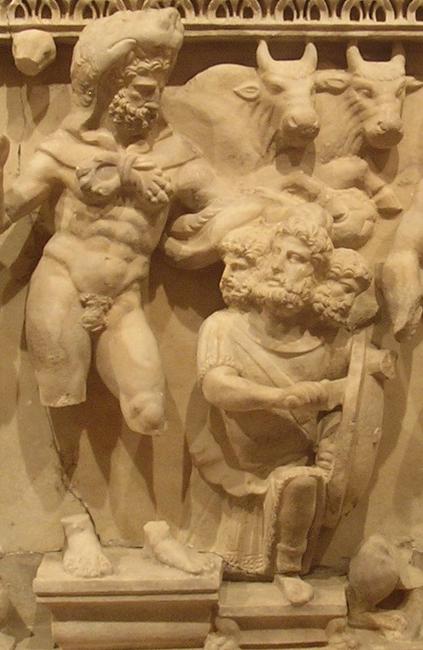
|
CLST 272-WI: Heroes and Classical Epics
Fall Semester 2005
Dr. Jacqueline Long
|

|
Writing Exercise 3
Goals
- To gather information from a literary text: practice skills of investigation
in reading
- To analyze your information and generate a hypothesis: practice skills of
critical thinking
- To advance your hypothesis by setting it forth together with supporting
evidence and arguments, clearly and concisely: practice skills of
effective communication in writing
The approach:
- Identify the focus of your inquiry: for this assignment, the visit Aeneas pays
to Evander in Book 8 of Vergil's Aeneid, and in particular the story of Hercules
and Cacus that Evander relates to Aeneas.
- For your own reference, briefly outline the narrative progress of the visit.
- Into what smaller units can the action usefully be broken down: what actions
or concerns focus significant units of Evander's and Aeneas's interaction, as far as
they proceed in it during the course of today's reading assignment?
- What concerns of the Aeneid as a whole does each stage of Evander's and
Aeneas's interaction help develop? How does the micro-interaction work so as to
develop these themes?
- Analyze your information: what points is Vergil getting at by having Evander and
Aeneas interact as they do, at each stage? How can you tell?
- Then turn to the details of the story of Hercules and Cacus, and compare and contrast
it to the concerns of the Aeneid as a whole you have identified as important to
the rest of Evander's and Aeneas's interaction.
- On the basis of your analysis, comparison, and contrasting, formulate a hypothesis
that answers the question,
What artistic designs of his Aeneid did Vergil
serve by having Evander tell Aeneas the story of Herules and Cacus, when and where he
does?
- Consider how the information (evidence) you have gathered in step 2 and the
analysis you have performed in steps 3 and 4 support the hypothesis you have formulated
in step 5. You are now re-analyzing so as to generate arguments that will
prove your hypothesis. Test and, if you need to, revise your hypothesis as you
go. Be sure that you address not only what evidence supports your hypothesis
and how it works, but also any evidence that might partially contradict your
hypothesis: why does it not invalidate it? No analysis can be solid without
assessing the whole picture.
- For ease of reference, be sure to note which part of the text supplies
the evidence on which you base your arguments. Book and line-numbers will be good
for the Aeneid, e.g., Vergil's first statement of his poetic subject (a different topic!)
is 1.1-12 in Mandelbaum's translation. (If for any reason you have to use a different
translation, include a note that identifies which one; otherwise I will assume it's
Mandelbaum's.)
- Sort the arguments you have generated in step 6: in what order does it make best
sense to present them?
- Now write.
- Briefly introduce your hypothesis: why is this problem worth considering?
Present your hypothesis as your answer to the problem.
- Concisely outline your arguments in the order you have determined will work
best, together with the evidence on which you base your arguments. (It is often
enough to paraphrase the text of the evidence very briefly, so long as you note
the reference so that anybody who wants to check a passage can find it easily.
Quote only when your argument really needs to consider specific wording of the text.)
- Briefly conclude your proof: how does your hypothesis, now demonstrated,
improve understanding of the initial problem?
- Double-spaced in 12-point Times Roman, you should have 3-4 pages, 900-1100 words.
- Review your draft in light of Strunk and White: make sure you are writing clearly
and correctly, using good standard American academic style. Fix any errors.
- Re-review Aeneid Book 8.1-484, and re-review your arguments: make sure you have
considered everything that is pertinent. Work in anything that initially got left out,
so that you are presenting the best possible case for your hypothesis.
- PROOFREAD. Fix any errors. Now print.
- Come to class Tuesday 22 November with your paper in hand, ready to contribute
to collaborative peer review of your own and others' papers.
BACK to CLST 272 Schedule of Readings and
Assignments

This file last updated 16 November 2005 by
jlong1@orion.it.luc.edu.
http://www.luc.edu/depts/classics/


